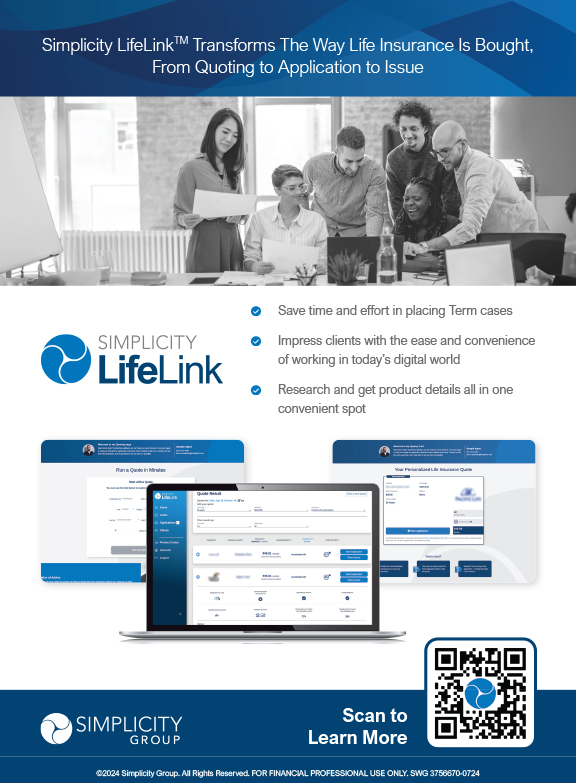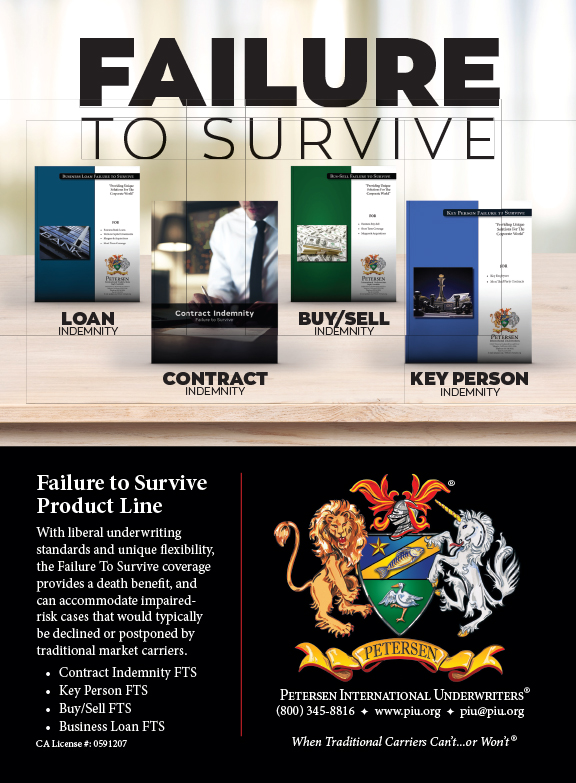Financial professionals have a number of challenges to address when discussing life insurance needs with their clients. First and foremost is a responsibility to understand the specific financial concerns that are common to different target audiences.
While younger clients are typically worried about saving for college education and retirement, retirees’ concerns often center on rising health care costs and leaving a legacy for their children and grandchildren. Many women clients need assistance with how to start saving and investing with smaller systemic contributions, while small business owners tend to focus on succession planning issues. Above all, each audience is concerned with death benefit protection for their spouse or partner (including business partners).
Another factor common to each of these groups is the need for help separating the myths from realities surrounding life insurance products—something that is especially true with fixed index universal life (FIUL) insurance.
Since it was first introduced, FIUL sales have been steadily growing. New carriers have been entering the market and launching new products, and new regulations, such as Actuarial Guideline 49 (AG 49), have gone into place and affected how FIUL policies are illustrated and sold. But as the market grows, so do the misconceptions about FIUL.
A closer look at some of these myths can help bring clarity to this topic and help you better communicate the opportunities FIUL may offer your clients.
Myth 1: The ability to offer cash value accumulation potential with a level of protection is too good to be true.
Reality: Most FIUL insurance policies offer the potential for cash value accumulation which is protected from negative index performance (however, fees and charges will reduce cash value). This is achieved by the company putting a portion of the premium into their general portfolio. Generally, this portfolio is conservative and made up mostly of bonds. This helps the insurance company provide a level of protection with the policy because, if the index performance is flat or negative, the client will not lose cash value due to the index performance.
A smaller portion of the premium is used to purchase options. These options help provide the insurer with the ability to offer cash value accumulation potential based on the positive performance of an external market index. When the external market index has positive performance, the cash value is credited with indexed interest (typically subject to a cap or participation rate).
The insurer generally spends the same amount regardless of the index allocations chosen. If the chosen index increases, the option will provide a return that is equal to the amount needed for the policy. If the chosen index decreases, the option will not provide credited interest to the policy.
Another misconception in the industry is that if the external market’s performance is greater than the cap on the life insurance policy, the carrier makes money. This is not true. Most carriers transfer away their investment risk with hedging, either internally or through investment banks. The carrier’s goal is to immunize themselves from market movements, focusing on their core business—insurance risk.
Myth 2: The product with the highest cap has the most accumulation potential.
Reality: Even though a carrier offers the highest cap, it may not yield the most cash value accumulation potential. With the goal to standardize illustrations across the life insurance industry, AG 49 set parameters for calculating a carriers’ maximum illustrated rate. However, carriers are still competing to offer the highest cap.
There are ways that the carrier’s options budget may be unrealistically inflated. For example:
- Artificially inflating caps, which can cause a product to have high charges or poor benefits.
- Aggressive investing—which is risky—and the carrier may not be able to sustain the caps in times of crisis.
- Minimizing the investment component, which can create an unbalanced product.
The cap is no indication of future cash value accumulation that a client could realize.
Another aspect of the discussion about index allocation is the importance of diversification. In addition to index choices, each crediting method offered has a different risk and return profile which should be considered in conjunction with your clients’ needs. With FIUL crediting methods, indexed interest may be applied annually to the policy based on the performance of the chosen index allocations. Each crediting method has strengths and weaknesses depending on the index performance. No choice is best in all scenarios, so that’s why it’s important to help your clients create a diversified strategy. Diversifying your allocations in an FIUL policy does not ensure the policy will earn interest.
Myth 3: All accumulation bonuses are designed the same
Reality: Accumulation bonuses are becoming more common in FIUL, but it’s important to know that not all bonuses work the same. A few facts about bonuses that are important to consider:
- Some bonuses are only applied to unloaned values, while others may be applied to both loaned and unloaned values.
- Not all bonuses are guaranteed, which means the insurance company may have the right to change the amount of the bonus or remove it entirely in the future.
- Products with a bonus may also have caps and participation rates adjusted to take the bonus into account.
- Some bonuses require allocation to a specific account or index, and some may be applied to both the fixed and index accounts.
In addition to these considerations, it’s important to understand the different types of bonus designs that carriers use:
- Multiplier factor: Instead of having a set bonus rate, another type of bonus design links the bonus rate to positive changes in an index. A multiplier applies a factor to the annual index accumulation, and may be subject to a cap.
- Flat rate bonus: The insurance company applies a flat rate bonus to the cash value of the policy monthly or annually.
- Look-back bonus: Another type of bonus that is linked to the indexed interest credit looks back at the past index credits to the policy. This method has a specified bonus rate and is based on the total amount of index credits to the policy over the previous specified period.
- Monthly charges earn interest: In most FIUL policies, monthly charges are taken out before any interest is calculated. This type of bonus applies interest to any monthly deductions.
Clearly, many variables exist regarding bonuses within FIUL products. While no bonus can be ideal in every situation, it is important to understand how a carrier’s bonus is designed so your client can be similarly informed when deciding which product is right for them.
Myth 4: Illustrations demonstrate exactly how the policy will perform while in force.
Reality: Illustrations are a snapshot of how the product and features could work and are often based on a flat illustrated rate. To provide clients and financial professionals with insight into how an illustrated rate can impact the accumulation potential of a product, many carriers provide historical backcasting in policy illustrations. While backcasting does not guarantee future interest credits to a policy, it does provide some understanding of how the policy could react in different market environments.
There are also several other variables to consider that would affect how a policy would perform and why it may vary from the original illustration:
Clients generally have the flexibility to change allocation selections yearly. They are not locked in to the initial allocation options they select. Perhaps the client would like to change or diversify their allocation selections. Different allocation selections perform differently; this would affect the original policy illustration. Assuming there is any available cash value, clients may also take policy loans or withdrawals. No one can be sure of what their future needs will be; if they borrow more or less than they originally anticipated, that would also cause performance to differ from the original policy illustration.
Some policies offer chronic illness protection. While some clients may anticipate and prepare for future health needs, we can’t foresee the cost of future medical and living expense that would be covered.
FIUL provides great flexibility and these are just a few features of which clients could take advantage. However, this flexibility means that their policy may not perform exactly as their illustration at one point in time suggested.
Although an FIUL policy will never be the right fit for every situation, it’s important for financial professionals to understand the different aspects of FIUL so they can provide their clients with all of the relevant information. Only when clients have all the facts can they make a truly informed decision about whether or not the product is a good fit for their specific financial situation.


























